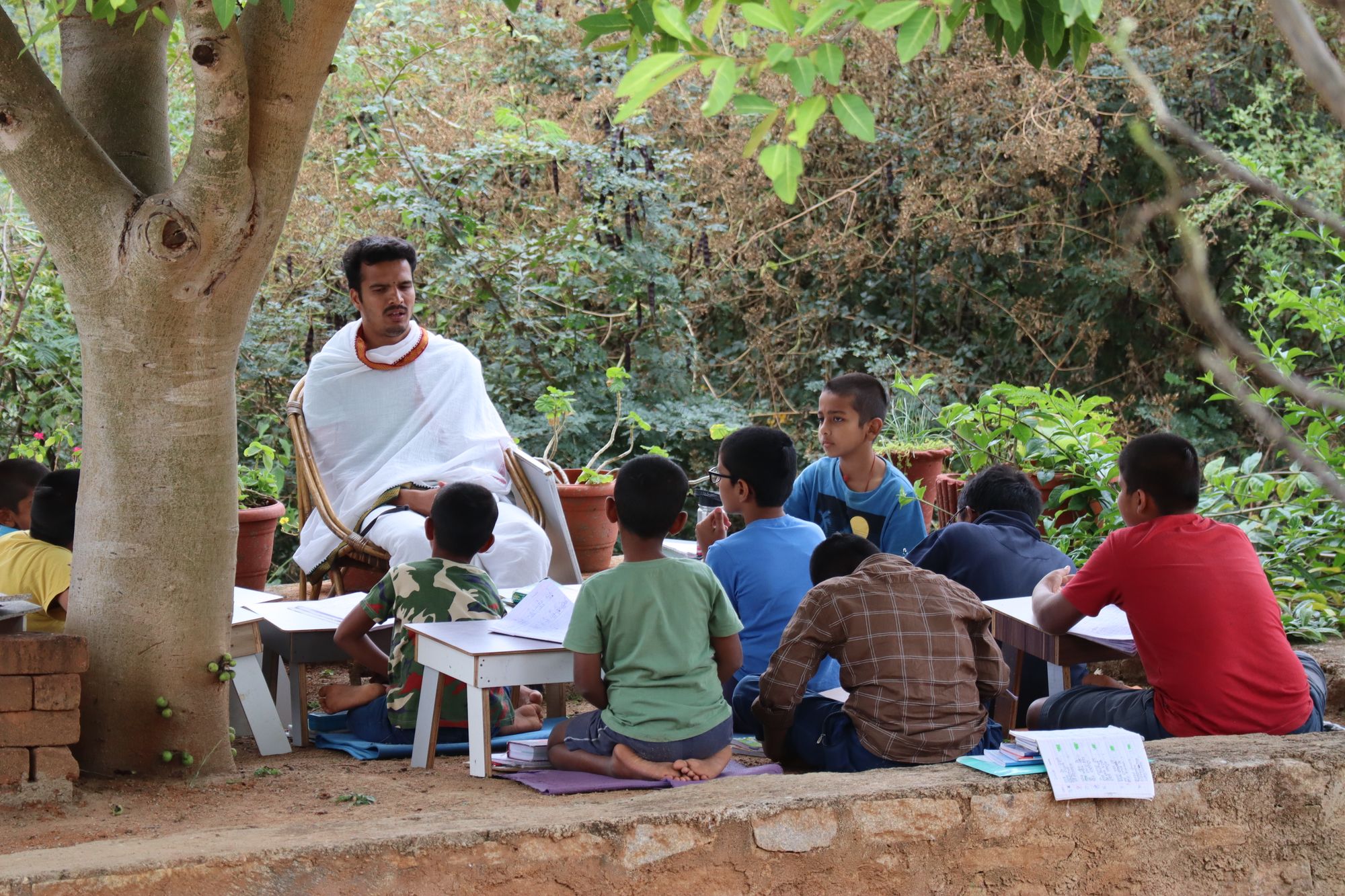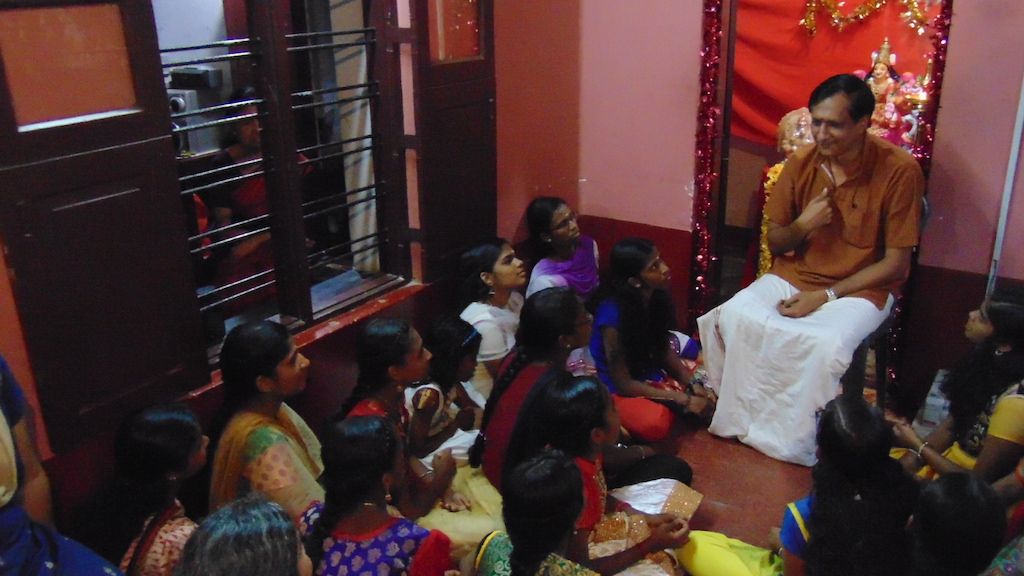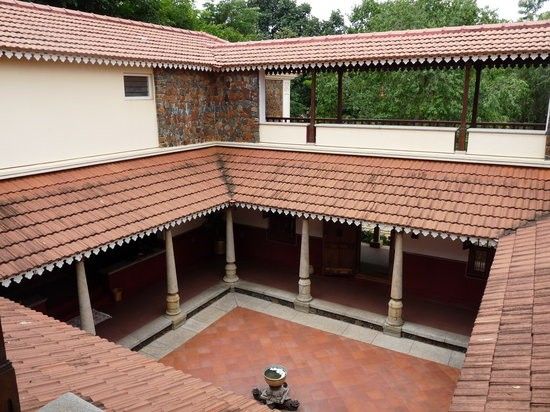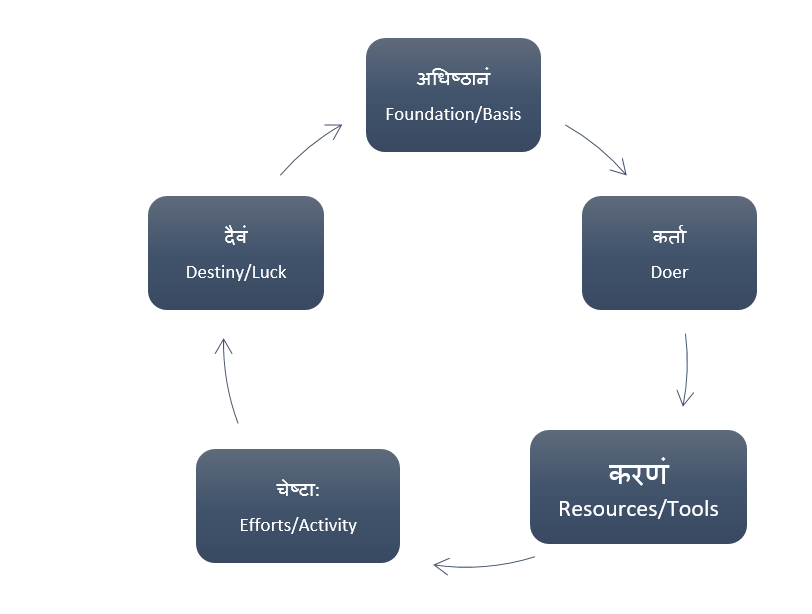The Necessary resources to Start a Gurukulam

There are numerous notions in the present society that a Gurukulam is a walled enclosure with rows of classrooms and office space, or an institution resembling a school or a college. It is but natural that such preconceived notions exist because we have all grown up in a system for the last two hundred years, where education is thought to be available only in government-regulated schools and colleges, and the goal of learning is the obtention of a certificate provided by them.
The first names that come to mind when we hear of the ancient education system are the large Gurukulams at Nalanda, Takshashila, Vikramashila, etc. This is because the information is available on only a few such Gurukulams in popular literature. The reason the names are heard in this sequence is that the said ancient Gurukulams are comparable in form, with European Universities.
Apart from such Large universities, there is also some information in Dharmapal’s book ‘Beautiful Tree’ about the presence of over six hundred thousand Gurukulams or path-shalas which were documented by British officials. But the British officers would have counted only distinct institutions or places of mass learning in their census. To the exception of this, the report of the British officials would not have recorded the transfer of learning in business, agriculture, arts, commerce, and so on, which passed on from one generation to another in institutions such as a family, clan, or community.
We must agree that in the ages before the foreign invasions, it would not have been possible to provide education to all the citizens of this undivided land through a handful of large Gurukulams. It can be arrived, that villages, towns, and cities must have had educational activity other than or as a feeder mechanism to what was provided in the large Gurukulams.
It is clear that in the large Indian nation, there was educational activity, larger but distinct from what has been recorded in history. The word ‘activity’ is consciously used instead of ‘education system’. This is because pre-British India did not have a concept of an officially designed and administratively controlled education “System”. We are here using the word “Education system”, which is absent in earlier literature on all indigenous languages.
It is true that kings patronized scholars, but it was not their royal duty to provide education to their subjects. This provision was made by the institutions of family and ‘kulam’, and this conforms to the popular belief that Gurukulams provided education.
Guru’s ‘kulam’ is Guru-kulam
The word ‘guru’ is defined to be ‘father’ in Sanskrit lexicons. This is an original connotation and is extended to mean, in common parlance, anyone who nurtures, teaches, and promotes the welfare of a child like a father does. It may be noted here that there are the terms ‘ Pancha-mata’ and ‘Pancha-pita’ means five individuals acting like the father, and five like the mother.
The noun group ‘guru-varga’ in the Padma Purana, lists over 12 familial relatives to be gurus. It may be a fair conclusion to call the family itself as the ‘Gurukulam’, both etymologically and in usage. Therefore, learning that is imparted in the family or lineage itself should be termed as ‘Gurukulam education’, and that ‘guru kulam’ is nothing else but ‘pitru-kulam’ or father’s house.

As a supplement to the learning that was obtained in the said ‘kulam’s or families, higher learning was made available in institutions like Takshashila built for the purpose and aptly given the same nomenclature – Gurukulam. But the name Gurukulam cannot be given only to such institutions. We have to remember that the original Gurukulam is the family home.
What are the resources?
What are the resources that are required for a Gurukulam? Before attempting to answer this question, we must have a proper definition of a Gurukulam. As discussed earlier, if we consider family as Gurukulam, all the domestic resources must be considered the resources for the Gurukulam. Rural homes with their back and front yards, portico, animal sheds, and large work sheds where the traditional family occupation was pursued were designed for schooling or as laboratories. In short, it can be said concisely, that resources for the Bharatiya home automatically constituted the resources required for the Gurukulams.

But in the current context of megapolises coming up with large urban multistoried buildings with their congested homes, creation of separate work and living spaces and their consequent ecology, the home cannot be called a Gurukulam. Home, classroom and laboratory are all disparate entities. Hence, the Construction of artificial laboratories has become essential in today’s schools.
An almost uniform syllabus is prescribed up to the High School in the Macaulay-inspired education system which leads to laboratories becoming similar and experiments becoming make-believe.
If we were to implement Gurukulam education and empirical learning system and also wish to retain uniformity among Gurukulams, what will emerge are Gurukulams taken out from the mold of school, and education will be restricted to only a few areas and unreal experiments. This will derail the entire resurrection process of Gurukulams.
Therefore, preparing an inventory of specific resources, specific subject teachers etc. to be applied to all Gurukulams, and their practice everywhere would be hazardous. The content taught in every Gurukulam tends to be in accordance with its location and era, and this makes each Gurukulam unique. Variety in choice of resources is invariable keeping in mind the variety of needs.
What are the essentials?
The question, “What are the prerequisites for a Gurukulam” would beget the one-line answer, “Only the Guru is the prerequisite, nothing else is.” Inasmuch as there is a felt need and prominence for Gurukulams which replace and resemble existing schools, they ought to be known by the name ‘Abhinava Gurukulam’, meaning modern Gurukulam, and an inventory can be prepared of the resources needed in such a modern Gurukulam. The said catalog may have three sections – वस्तु, विषय& विचार /Vastu, vishaya, and vicāra (material, subjects, and thoughts)
1. वस्तु /vastu (Material)
‘Abhinava Gurukulams’ must possess five distinct departments.
1. Paatha-shala
2. Paka-shala
3. Prayoga-shala
4. Gow-shala
5. Atithi-shala
This Pancha-shala or the five-home complex forms the foundation of the modern Gurukulam. These may be kept apart, or may also contain one or more of the others.
For example, the Paatha-shala may have separate compartments constructed for the purpose, or maybe the front-yard of Guru’s home can be used as classroom. There may be a need for at least two acres of land to bring such a five-home school complex to reality and use.
To turn the home for cows and agricultural etc activity to reality, there may be the need for over 5 acres of land. The design of the laboratory will be as per the theme chosen by Gurukulam.
For example, in the context of the study of Veda along with six limbs (shadanga) in the Gurukulam, the yaga-shalaitself becomes the laboratory. The practical requirements include a patch of forest for the collection of Samit twigs and darbha grass, a garden for the puja flowers, a yard for managing the cows, and so on. Since Vaidik education would include practicing how to cut and collect samit, how to milk a cow etc, the goshala, agricultural meadows, and fields would also be categorized under laboratories.
If the Gurukulam were formed for Kalari martial arts as a part of dhanurveda, different laboratories like a metal foundry for the weapons, a gymnasium/wrestling arena, etc would become laboratories.
If there was to be a teaching of Ayurveda texts, the laboratories would include the woods for the collection of herbs, a medicine compounding house, etc.
Patha-shala would need a library, computer lab etc too. This way, different Gurukulams would have different types of laboratories and necessities.
There will have to be the generation of financial resources in addition to the land, building, and other components in the Gurukulam. The revenues might accrue from the guru dakshina tendered by students after some ten years of the Gurukulam’s existence.
But a corpus will have to be built to meet the expenses of the first ten years. Since the guru is resident in the Gurukulam (and hence the name), the teachers have to be provided living accommodation and must be paid a monthly dakshina (honorarium) equivalent to the prevailing cost of one tola (10 grams) of gold. Neither the giver nor the receiver should feel that the payment is a salary or that this is employment.
2. विषय /vishaya (Subject)
Though during the five or six years of primary education, the main subjects of study can be languages, literature, music, mathematics, physics or chemistry, another art or skill may be chosen for special study. Here, art does not mean only music, dance or other ‘fine’ arts. Agriculture, Commerce etc also belong to the Art (Kala) category. The objective must be the study of one system of study – shaastra – and two ancillary subjects.
Shaastra does not mean only Dharma-shastra. Let us remember that the suffix shastra is carried by subjects such as Physics, Astronomy, Mathematics etc, and Shastra means Sciences.
एकं शास्त्रमधीयानो न विद्याच्छास्त्रनिश्चयम् ।
तस्माद्बहुश्रुतः शास्त्रं विजानीयाच्चिकित्सकः ॥ - (सु. संहिता 1-4-7)
(ekaṃ śāstramadhīyāno na vidyācchāstraniścayam ।
Tasmād bahuśrutaḥ śāstraṃ vijānīyāccikitsakaḥ ॥ - Sushruta Samhita 1-4-7)
(One who has specialized in only one shastra must not draw conclusions while examining things. Thus, the physician (before proceeding into treatment) must be well versed with many shastras)
Though Sushruta is talking about doctors here, this applies everywhere. Those who have read more than one science, i.e. widely-read, are called ‘bahu-shruta’ scholars. Those with expertise in one subject but lacking in this ‘bahu-shruta’ quality will experience a setback in higher education, research, etc. Therefore, learning content must include more than one shastra at a young age. But most importantly, as the six limbs of Veda are interrelated, fulfill an area of study and all of them are useful for the learner until his death, we need to choose such interrelated sciences from the beginning of the curriculum.
Modern educationists call this a ‘Multidisciplinary Approach’, and this finds a recommendation in the National Education Policy for inclusion in school pedagogy.
3. विचार /vicāra – Thoughts

The adoption of reason or a proper perspective is very important when we apply ourselves to any task. All efforts will lack direction when one is not aware of the purpose or is not working to achieve one’s resolve. If the perspective and its reason are clear, implementation will follow the desired lines. This constitutes a well-reasoned procedure or ‘adhishthāna’ .
अधिष्ठानं तथा कर्ता करणं च पृथग्विधम् ।
विविधाश्च पृथक्चेष्टा: दैवंचैवात्र पञ्चमम् ॥ 18-14
(adhiṣṭhānaṃ tathā kartā karaṇaṃ ca pṛthagvidham ।
Vividhāśca pṛthakceṣṭā: daivaṃ caivātra pañcamam ॥ - bhagavadgītā 18-14)
Translation: - The basis, as well as the agent, and diverse instruments, and distinct activity of various kinds and Destiny, which is certainly the fifth [factor].

For action to yield fruit, five factors are mentioned by Sri Krishna in the above verse, among which ‘adhishthāna’ is number one. If the Basis is in the form of thought, it’s called वैचारिक अधिष्ठान / vaicārika adhiṣṭhāna.
Out of these five aspects, “adhishthāna’’ consists of Purpose, Mission and Clarity about the Mission that is also known as uddeśya, dhyeya and spaṣṭatā in Indian languages.
1. Purpose (uddeśya): There must be a specific purpose behind the creation of a Gurukulam, including the results expected from it. The purpose may be individual or societal.
2. Mission (dhyeya): For the person or the team that aims at a result or an achievement, the process or product must be guided by a long-term and noble sense of the mission at hand.
3. Clarity: (spaṣṭatā) There must be clarity about aspects such as, what result is expected, whether the fruit of labor is complementary to the noble mission, whether the means employed or their implementation really aid the achievement of the mission
The Purpose or ambition may be individual, familial, or social, and is realizable in a certain length of time. But the Mission has no such limitations as time. In other words, purpose or ambition may have an individualistic orientation, whereas the Mission will have a societal or wider orientation. However, both these orientations will have to be complementary to each other.
For illustration, let us consider a youngster who invents a computer-based instrument, and wants to obtain a patent. What returns does he expect?
His expectations will be that his invention be accepted, that it will get a patent, that it will pave the way to name and fame, and opportunity and cooperation to take up more large projects. With the money that the sale of the invention brings, he would want to buy a house, provide ample comforts for his parents, look after his children well, and have similar familial, social, and professional outcomes, all from that single patent. This is the Purpose (uddeśya) part of the “adhishthāna’’. Apart from this immediate and Individual purpose, he has to have a Mission (dhyeya).
As overseas companies are dominant in the manufacture of computer-related products, the import of equipment is rather expensive, given the high costs imposed by the companies and the import duties on them. If the above-mentioned patent is obtained, these problems are ameliorated, and this leads to using of indigenous products thereby aiding self-reliance at a national level.
If an individual Indian obtains a patent in the hardware sector, it could inspire others, lead to a revolution where the Government will suitably make laws, provide the resources and so on, and result in India’s hardware sector grow to a level of being a supplier of hardware to the rest of the world in the next couple of decades. Thus, when many people with foresight try a variety of tasks, it will result in widespread changes, even globally. This is the Mission aspect that we should bear in mind.
The individual who attempts for copyright for his small product and has small material expectations thereupon must have a larger and longer Mission that has national or global ramifications. His clarity regarding how his personal gains help in the advancement of the mission, what to favor when there is conflict between his selfish goals and long-term missions, and similar considerations will constitute the (spaṣṭatā) rationality aspect of his resource handling. Thus, our adhishthāna has to have all three dimensions that are uddeśya, dhyeya & spaṣṭatā.
Approach or intention.
Gurukulams may also study ancient shastras, not only with the intention of preserving ancient learning or celebrating the hoary past, but also to develop a vision about how to apply ancient knowledge suitably to future development. Whatever has no future utility is only of historical significance. Hence learning needs to be farsighted and clearsighted.
Thus, वस्तु, विषय& विचार /vastu, vishaya and vicāra (material, subjects and thoughts - are the three resources that are essential for the founding of a modern Gurukulam.

